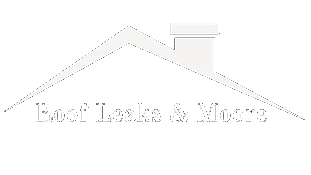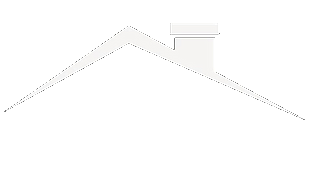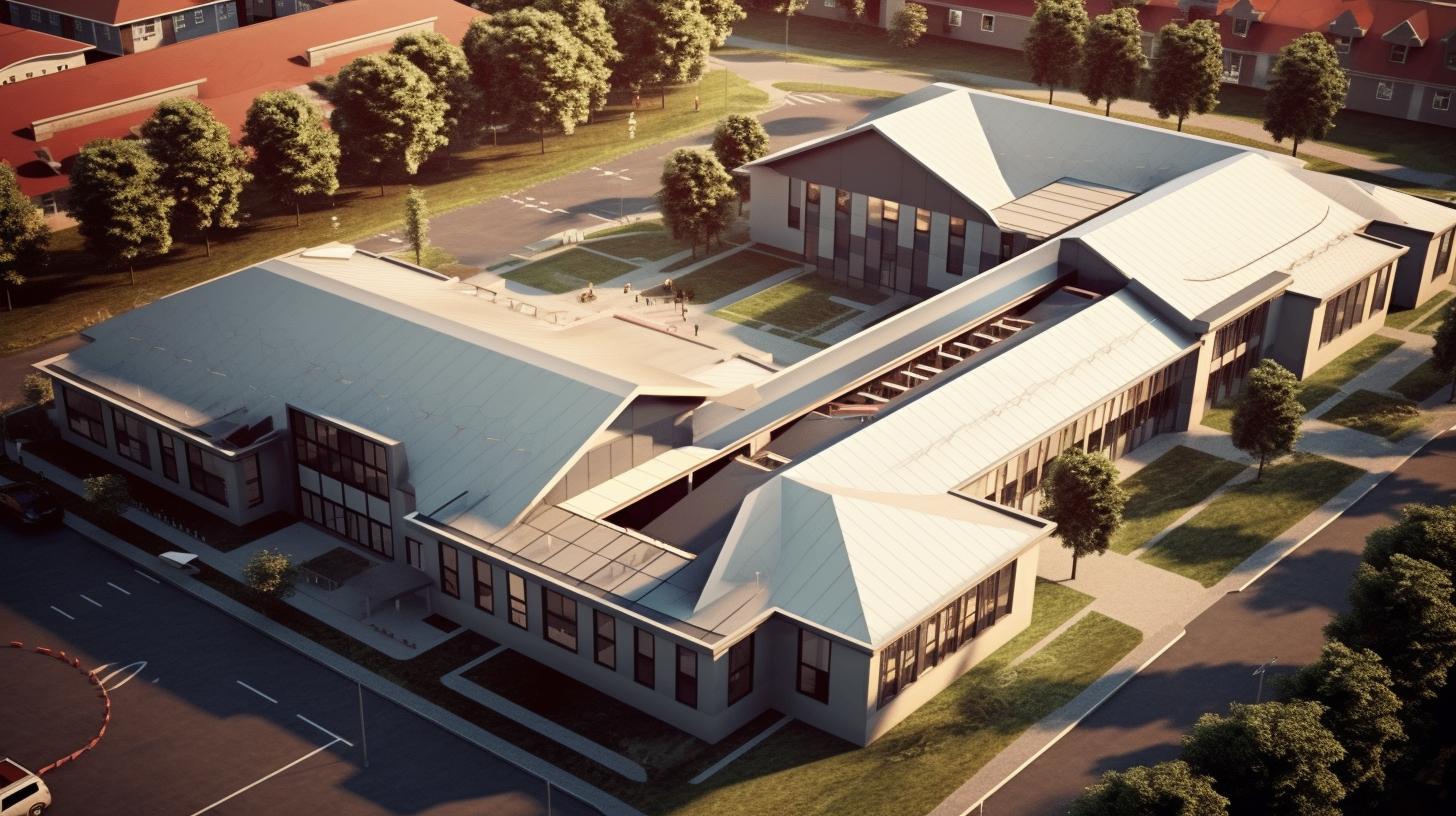You stand at the foot of your school or university, gazing upwards at the roof that shelters your institution. It is a structure that has withstood the test of time, weathered countless storms and provided a sturdy canopy for generations of students. But as with all things, time takes its toll, and it may be time to consider a renovation.
A roof renovation is not just about fixing leaks and improving structural integrity. It is an opportunity to enhance the educational environment, to create a space that inspires learning and fosters growth.
In this article, we will explore the intricacies of planning a roof renovation for schools and universities. From assessing the roof’s condition to ensuring safety and compliance, we will cover all the essential aspects of this process. We will also delve into the importance of incorporating sustainability, improving acoustics, and enhancing the aesthetic appeal of the roof.
By the end of this article, you will have a comprehensive understanding of how to plan a roof renovation that not only improves the functionality of the roof but also transforms it into a space that enhances the educational experience.
Assessing the Roof’s Condition
How’s the roof holding up? Is it time for some upgrades? Before embarking on any roof renovation project, it’s essential to assess the condition of the roof.
Conducting a thorough roof inspection is crucial to identify any issues that may need addressing. Inspectors should check for cracks, leaks, and other signs of wear and tear. They should also examine the roof’s structure, including the decking, insulation, and ventilation.
Once the inspection is complete, it’s necessary to develop a maintenance plan to ensure the roof remains in good condition.
A maintenance plan should outline regular inspections, cleaning, and repairs. It should also include a schedule for replacing any damaged or worn-out components. A well-maintained roof can last for many years, reducing the need for costly repairs or replacements.
By investing in regular maintenance, schools and universities can ensure their roofs remain in top condition, providing a safe and comfortable learning environment for students. Incorporating sustainability into the maintenance plan can also help reduce energy costs and minimize the environmental impact of the roof renovation project.
Incorporating Sustainability
By integrating sustainable practices, you can create a more eco-friendly and efficient atmosphere within your educational facility. There are numerous eco-friendly options and energy-efficient solutions that you can incorporate into your roof renovation plans. For instance, you could install solar panels on your roof to generate clean energy and reduce your reliance on traditional energy sources. This would not only reduce your carbon footprint but also save you money on your electricity bills in the long run. You could also opt for green roofing solutions, such as vegetative roofs, which can help reduce the urban heat island effect, improve air quality, and provide insulation benefits.
When planning your roof renovation, it is important to consider sustainability as a primary factor. By incorporating eco-friendly and energy-efficient solutions, you can not only reduce your environmental impact but also create a healthier and more comfortable learning environment for your students and staff. The table below outlines some of the key benefits of incorporating sustainability into your roof renovation plans.
| Benefit | Description |
|---|---|
| Energy savings | Save money on energy bills and reduce your carbon footprint |
| Improved indoor air quality | Reduce exposure to harmful pollutants and allergens |
| Increased thermal comfort | Maintain a comfortable indoor temperature throughout the year |
As you consider incorporating sustainable practices into your roof renovation plans, it is also important to examine ways to improve acoustics within your educational facility.
Improving Acoustics
Just like a musician fine-tuning their instrument, you can tune your learning space to create a more harmonious environment by incorporating sound-absorbing materials to improve acoustics. It’s important to consider the acoustic design of your classrooms, as it can greatly impact classroom comfort and ultimately, learning outcomes.
Here are some tips to improve acoustics:
- Install acoustic ceiling tiles to absorb sound and reduce noise levels.
- Use carpet or rugs instead of hard flooring, as it can absorb sound and reduce noise levels.
- Place acoustic panels on walls to reduce sound reflections and echoes.
- Use sound masking systems to cover up unwanted noise and create a more peaceful environment.
- Consider the placement of furniture and equipment, as they can impact sound reflections and absorption.
By incorporating these tips, you can greatly enhance the acoustics of your learning environment and create a more comfortable space for students.
As you move forward with your roof renovation plans, it’s important to also consider ensuring safety and compliance for your educational facility.
Ensuring Safety and Compliance
Ensuring a safe and compliant learning space is crucial for student success and requires careful attention to detail. This is why auditing compliance and safety standards should be an essential part of the planning process for roof renovations in schools and universities.
Schools have a duty of care to create a safe and secure environment that’s conducive to learning. This includes everything from ensuring that the roof is structurally sound to making sure that the materials used in the renovation are safe and compliant with relevant regulations.
An audit of the school’s compliance with safety standards can help identify potential hazards that need to be addressed during the renovation process. This can include issues such as fire safety, access to emergency exits, and the use of non-toxic materials. By addressing these concerns, schools can ensure that students and staff are safe and that the learning environment is conducive to academic success.
The next step is to enhance the aesthetic appeal of the roof, which will be discussed in the subsequent section.
Enhancing the Aesthetic Appeal
When it comes to enhancing the aesthetic appeal of your school or university building, choosing the right roofing materials is crucial. This decision can impact the overall look of the building, as well as its value. By opting for high-quality materials that complement the existing architecture, you can increase the building’s curb appeal and make a positive impression on visitors and students alike.
Adjusting the paragraph structure in this way allows each complete sentence to stand on its own and emphasizes the importance of each point. Additionally, using contractions makes the text more conversational and approachable.
Choosing the right roofing materials
You can select from a variety of roofing materials, but have you considered which one will provide the best insulation and durability for your school or university? Choosing the right roofing materials is crucial in ensuring that your building is protected from the elements and can withstand wear and tear over time.
Here are some options to consider:
- Metal roofing: This option is cost-effective and durable, with a lifespan of up to 50 years. Metal roofs are low maintenance and provide excellent insulation, making them a practical choice for educational buildings.
- Asphalt shingles: These are a popular choice due to their affordability and versatility. They come in a variety of colors, making it easy to match them to your building’s style. However, they have a shorter lifespan than other options and can be more susceptible to damage.
- Clay tiles: This option is more expensive than others, but it is durable and fire-resistant. Clay tiles are known for their aesthetic appeal and long lifespan, often lasting up to 100 years. However, they are heavy and may require additional support structures.
- EPDM roofing: This is a single-ply option that is cost-effective and easy to install. It is durable and resistant to UV rays, making it a good option for areas with high sun exposure. However, it may not be as visually appealing as other options.
Choosing the right roofing materials is just one step in enhancing the building’s appearance. Next, consider implementing design elements that complement the new roof and enhance the overall aesthetic appeal of your educational environment.
Enhancing the building’s appearance
Now that you’ve chosen the right materials for your school or university’s roof, it’s time to focus on enhancing the building’s appearance.
A well-designed roof not only protects the building from the elements but can also add value and aesthetic appeal.
When planning your roofing design, consider color coordination with the rest of the building’s exterior and surrounding environment.
For example, if your school is located in a wooded area, a green or brown roof can help the building blend in with the natural surroundings.
On the other hand, if your university is located in a city center, a sleek and modern roof design with bold colors can make a statement and attract attention.
Additionally, incorporating unique architectural features, such as dormers or skylights, can add visual interest and functionality to the roof.
Enhancing the building’s appearance is just one step in planning roof renovations for schools and universities.
Next, we’ll discuss how increasing the building’s value can benefit your institution in the long run.
Increasing the building’s value
By increasing the value of your institution’s building through thoughtful design choices and upgrades, you can create a more attractive and appealing space for students, faculty, and visitors alike. Investing in renovations can also yield a significant return on investment (ROI) for your institution.
Here are some marketability strategies to consider when planning your roof renovations:
- Conduct a thorough ROI analysis to determine which upgrades will provide the most value for your institution.
- Consider adding energy-efficient features such as solar panels, green roofing, and insulation to reduce your building’s carbon footprint and save on energy costs.
- Choose durable, low-maintenance materials to reduce long-term maintenance costs and increase the lifespan of your roof.
- Incorporate modern design elements that reflect your institution’s brand and values, such as bold colors, unique shapes, and custom graphics.
- Consider adding outdoor spaces such as rooftop gardens or patios to provide additional gathering spaces for students and faculty.
By implementing these marketability strategies, you can not only increase the value and functionality of your institution’s building but also create a more engaging and inspiring educational environment for all who use it.



